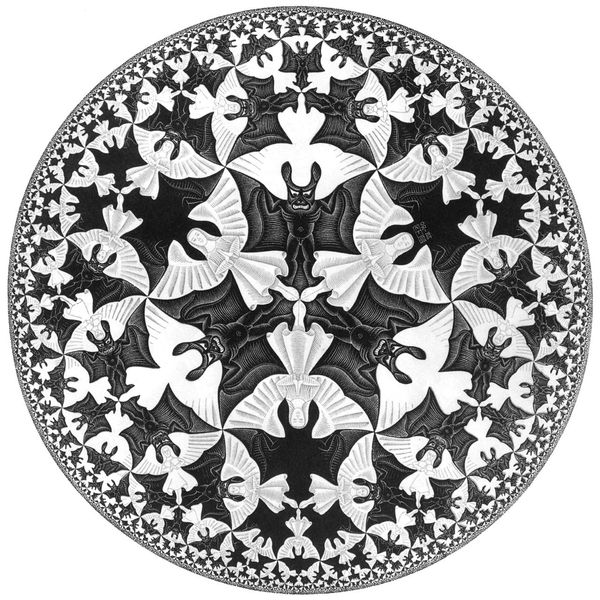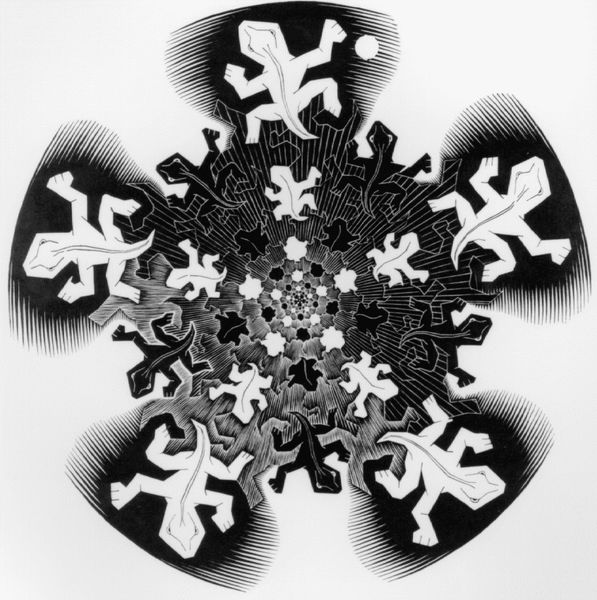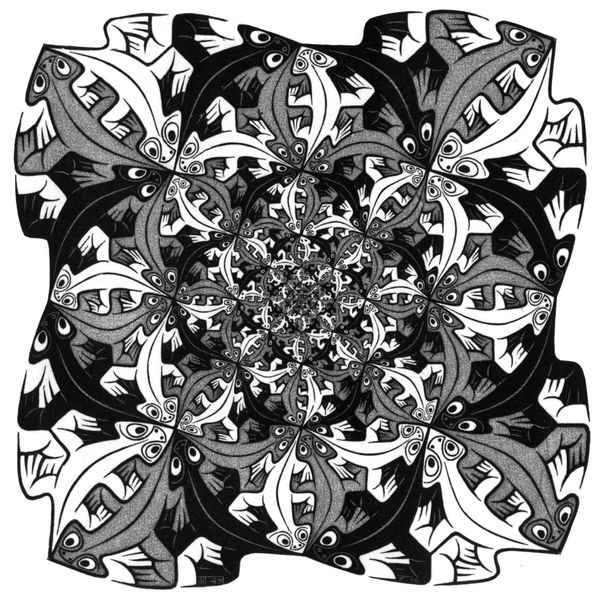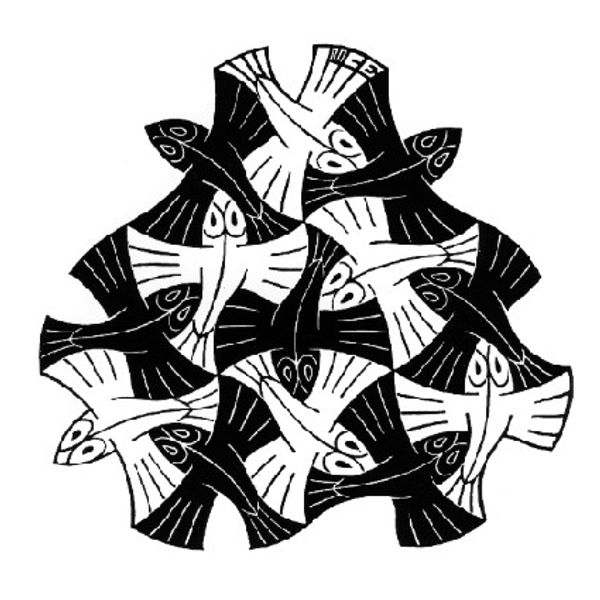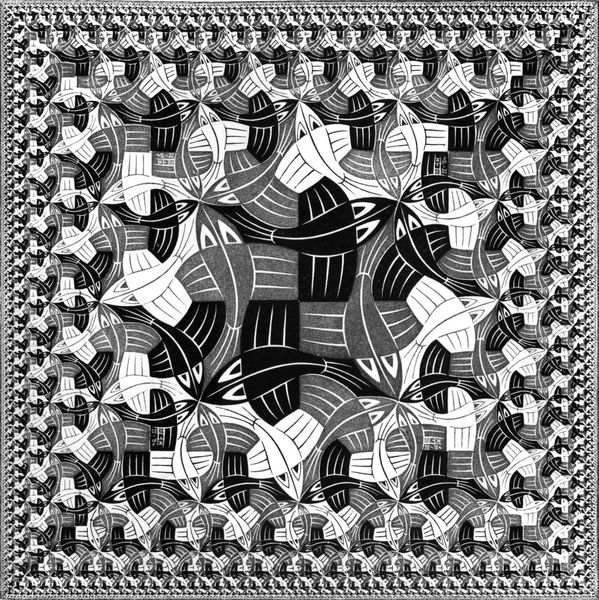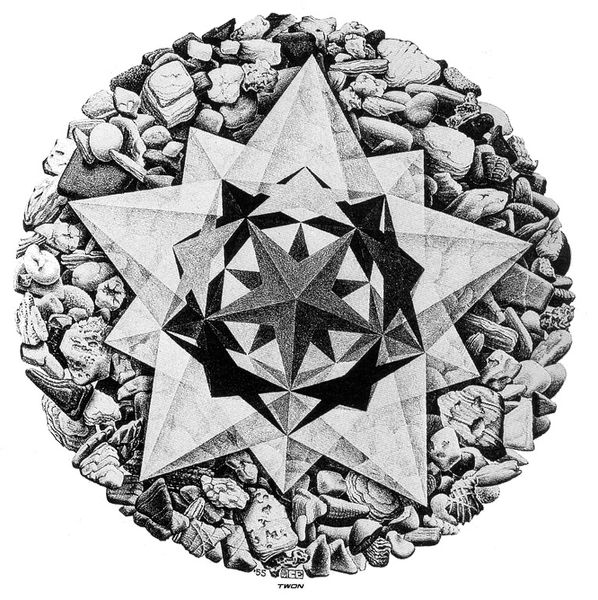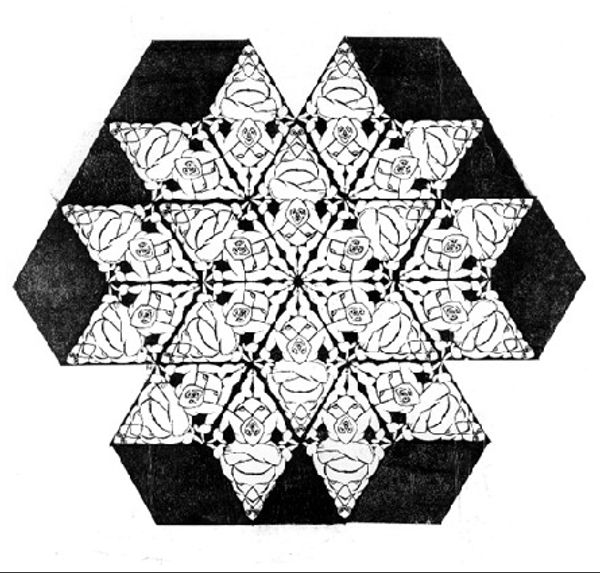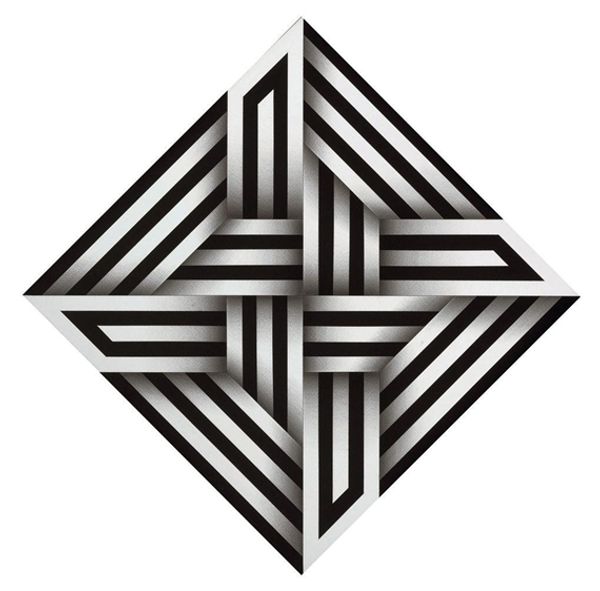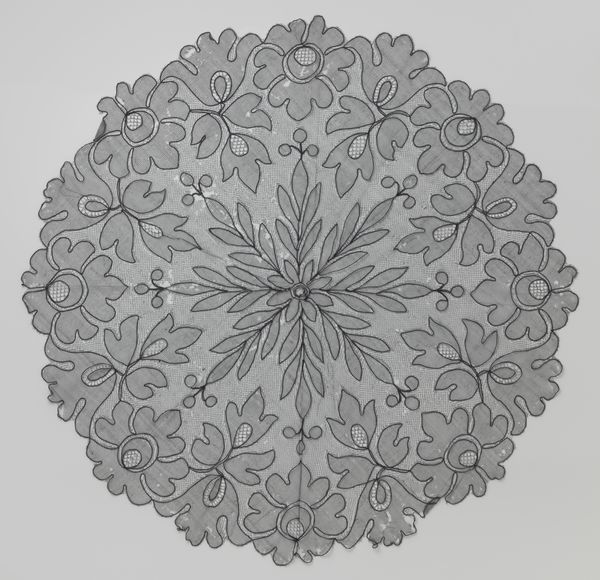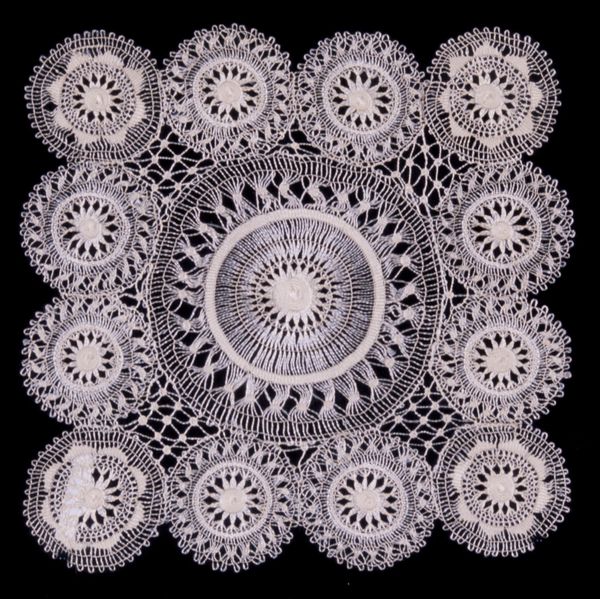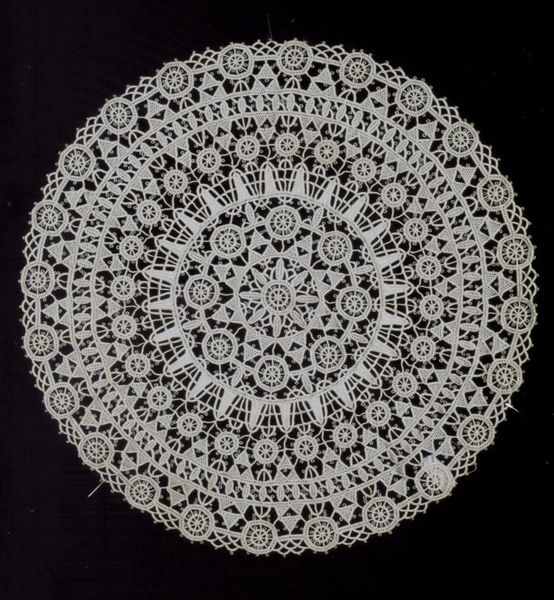
# print
#
little amount of pattern
#
pattern
#
repetitive shape and pattern
#
organic pattern
#
geometric
#
repetition of pattern
#
abstraction
#
intricate pattern
#
pattern repetition
#
layered pattern
#
funky pattern
#
combined pattern
#
repetitive pattern
Copyright: M.C. Escher,Fair Use
Editor: M.C. Escher's "Circle Limit I", a print from 1958, really messes with my head. All these fish…getting smaller and smaller as they reach the edge of the circle. It’s almost dizzying. What do you make of it? Curator: For me, this work is a fascinating exploration of material processes and their relationship to mathematics and labor. Escher wasn't just creating an image; he was meticulously crafting a system, a repeating tile, from a matrix that demonstrates hyperbolic geometry using the material constraints of printing. Think about the physical act of carving the woodblock, and inking and transferring the image. It’s an intense engagement with the medium. How does that strike you? Editor: So it's not just about the illusion, but about the work that went into creating that illusion? How the labor is evident? Curator: Exactly! The precise repetition of those tiny fish requires incredible skill, and even a slight miscalculation would ruin the whole effect. The process mirrors the content; it’s about limitations but also the ingenuity humans apply to those constraints. How do you view this artwork in the light of mass production and material availability of his era? Editor: I hadn’t really considered it that way. Now I'm wondering about his tools, the ink, and paper... where he sourced his material. It's no longer just about fish! Curator: Indeed! Examining the material means of production encourages us to think about art not just as an object of aesthetic contemplation but as a product of material and intellectual labour. Editor: That gives me a new perspective. Thanks! Curator: A valuable one! Focusing on those tangible components and contexts lets us question traditional boundaries.
Comments
No comments
Be the first to comment and join the conversation on the ultimate creative platform.
